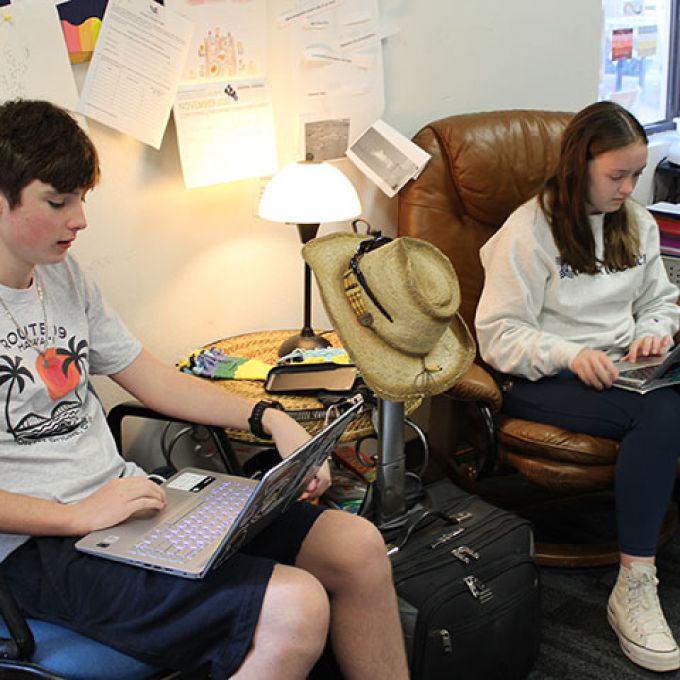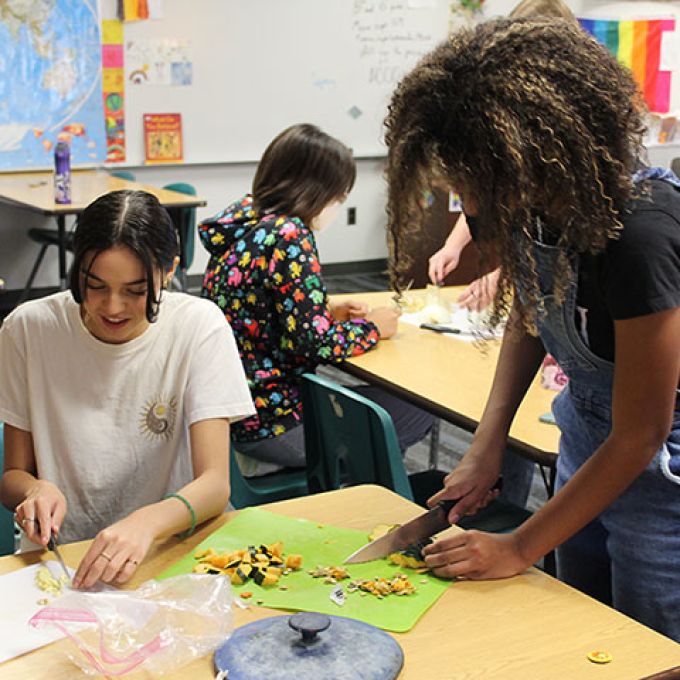(Left) Students in the Native American & Indigenous History class research current events to present to the group. Recent topics have included the impact of the overturning of Roe v. Wade on Indigenous women, and the implications of tribal sovereignty on the Pine Ridge Reservation in relation to distribution of a pamphlet criticizing traditional spirituality. (Right) A group of students make Three Sisters Stew featuring tepary beans, which are a traditional Tohono O'odham food.
New course examines US Indigenous history and contemporary issues
Upper School students had the opportunity to take a new social sciences class this fall: Ms. Katie Patt’s Native American & Indigenous History. This one semester course surveys the history of Native Americans from contact with Europeans to modern times, with a focus on the 20th century.
“I never had enough time in my U.S. history class to really take a deep dive into Indigenous history,” Ms. Patt explained, about her motivation for creating the course. “Also, when you consider that we live in a state with 22 federally recognized tribes, it seems like we should give these nations more of a voice.” Ms. Patt participated in a National Endowment for the Humanities summer program in Tucson called “The Palimpsest of Cultures” that helped her plan the course and write her syllabus.
The Gregory School’s social sciences department is committed to looking at history through a variety of lenses and perspectives, and the Native American & Indigenous History course is designed to go beyond what students examine in U.S. history, providing the opportunity to examine individual tribal histories and contemporary issues. “History is many voices, many people, over time,” Ms. Patt said. “This class just adds to the voices that we get to hear in history.”
Assignments and assessments include a variety of presentations, written reflections, discussion, and activities. The course will culminate in a research project on a topic of each student’s choosing, which the student may either teach as a lesson to Middle School students during a Friday Exploration or turn into a paper.
“In all of the documentaries that we have watched or articles we have read, the bottom line that we are hearing from indigenous communities is that it is essential for everyone to know that they are still here,” Ms. Patt said. “That is the message of my course; indigenous communities are still here. They have resisted, shown resilence, and survived genocide and they are still here.”

